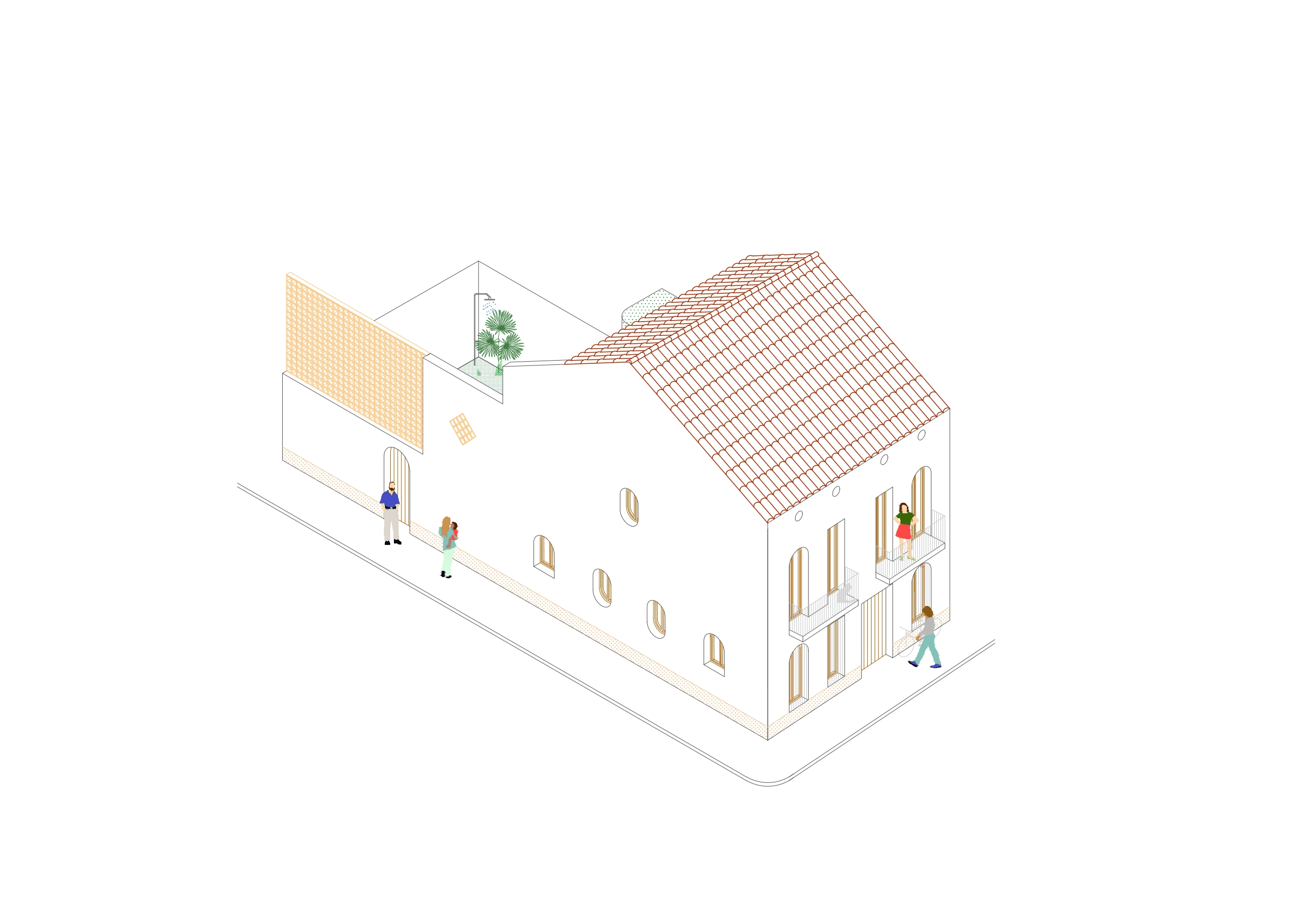
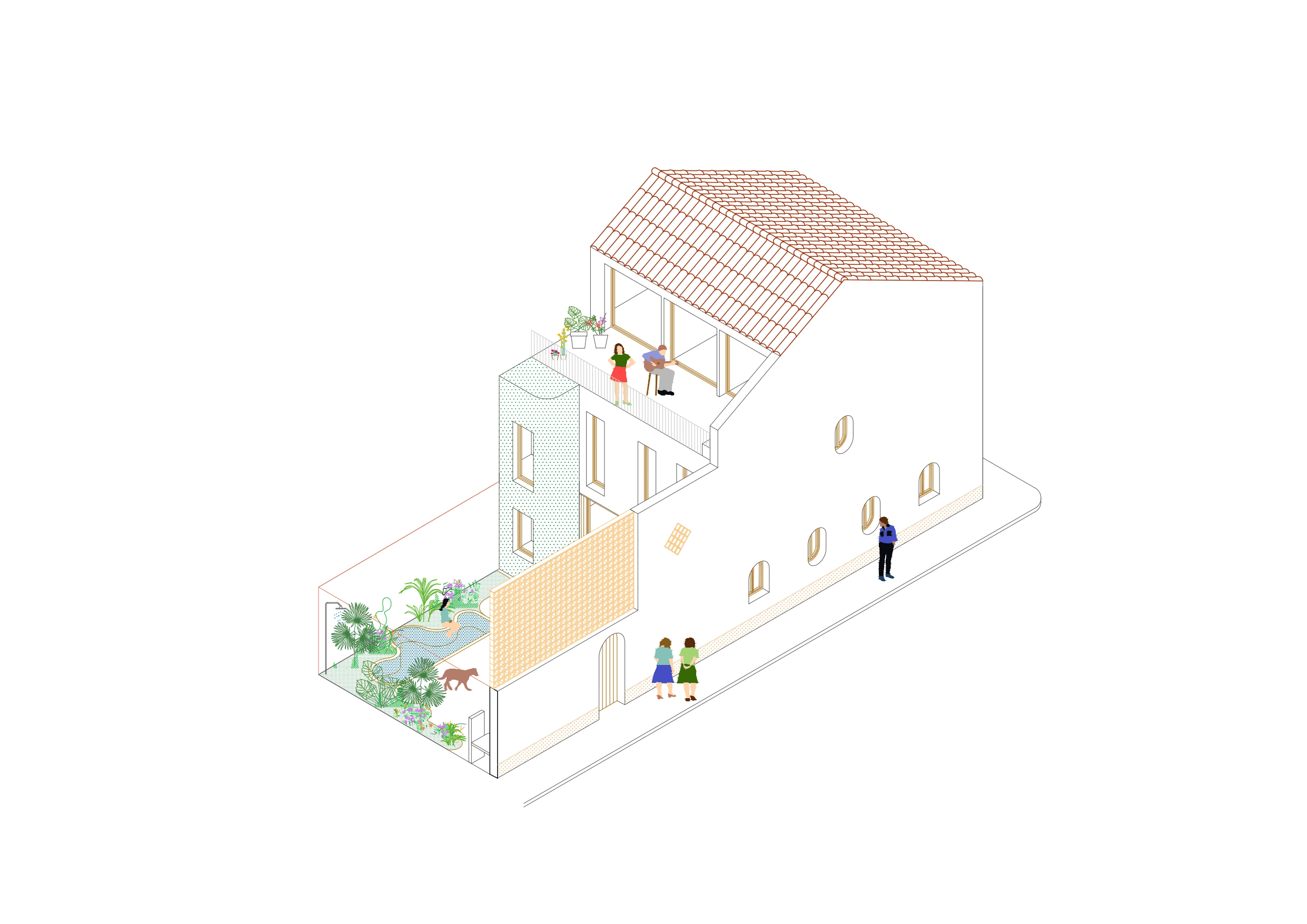
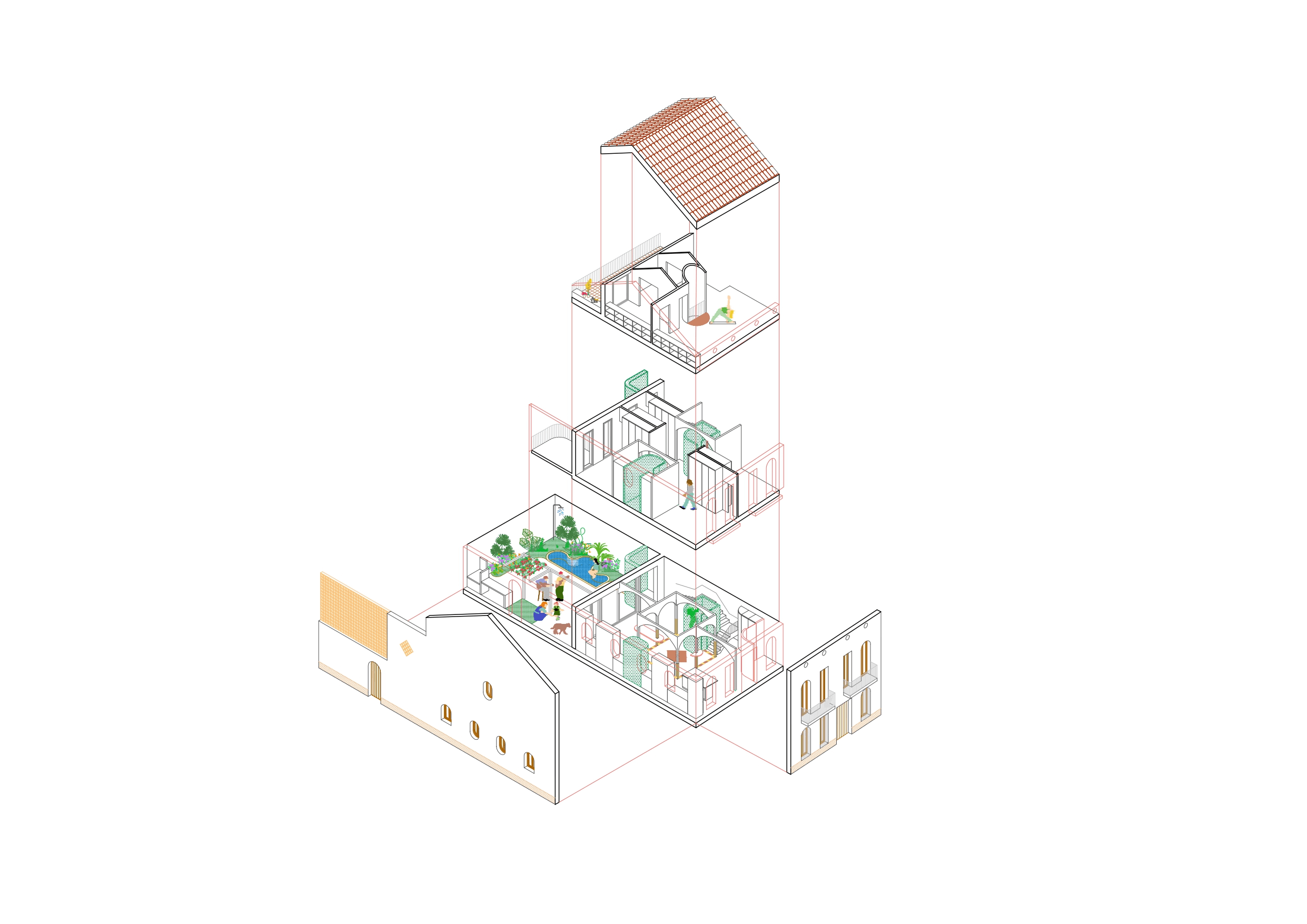
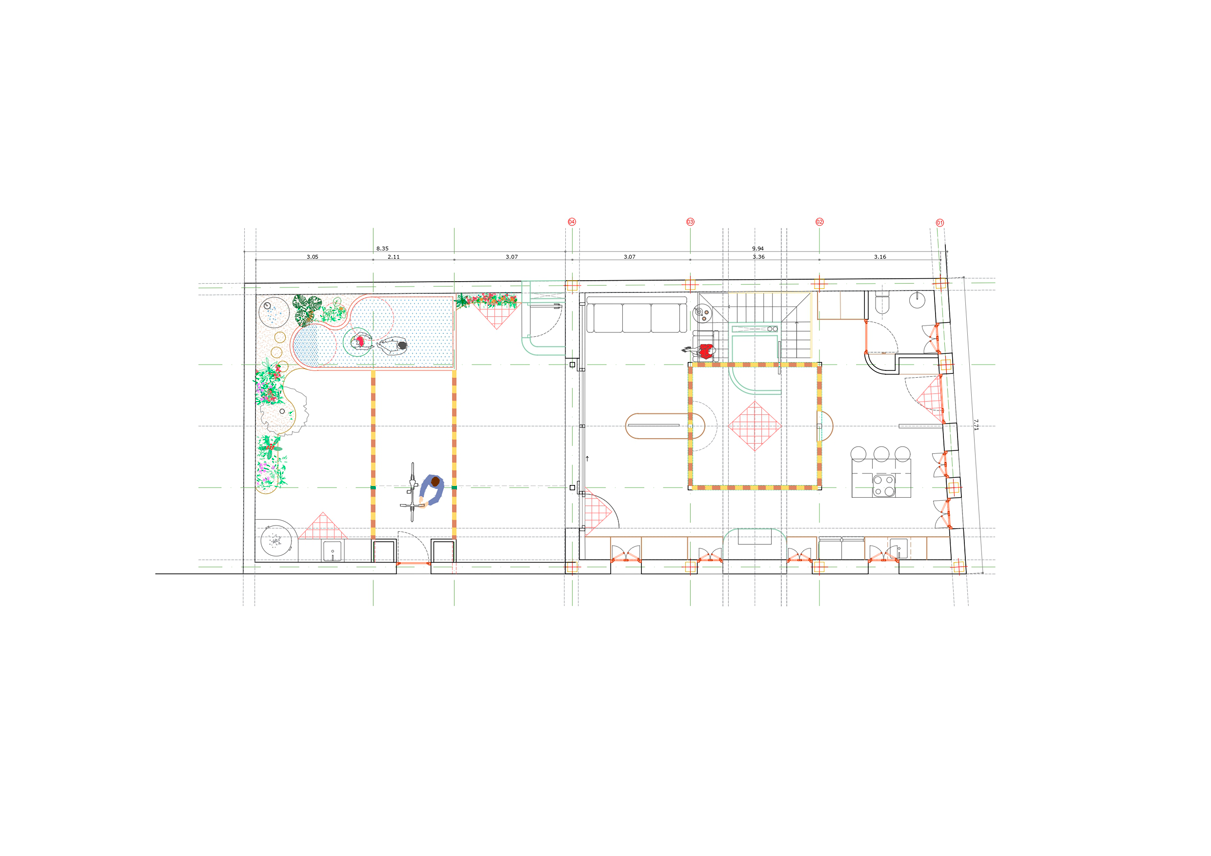
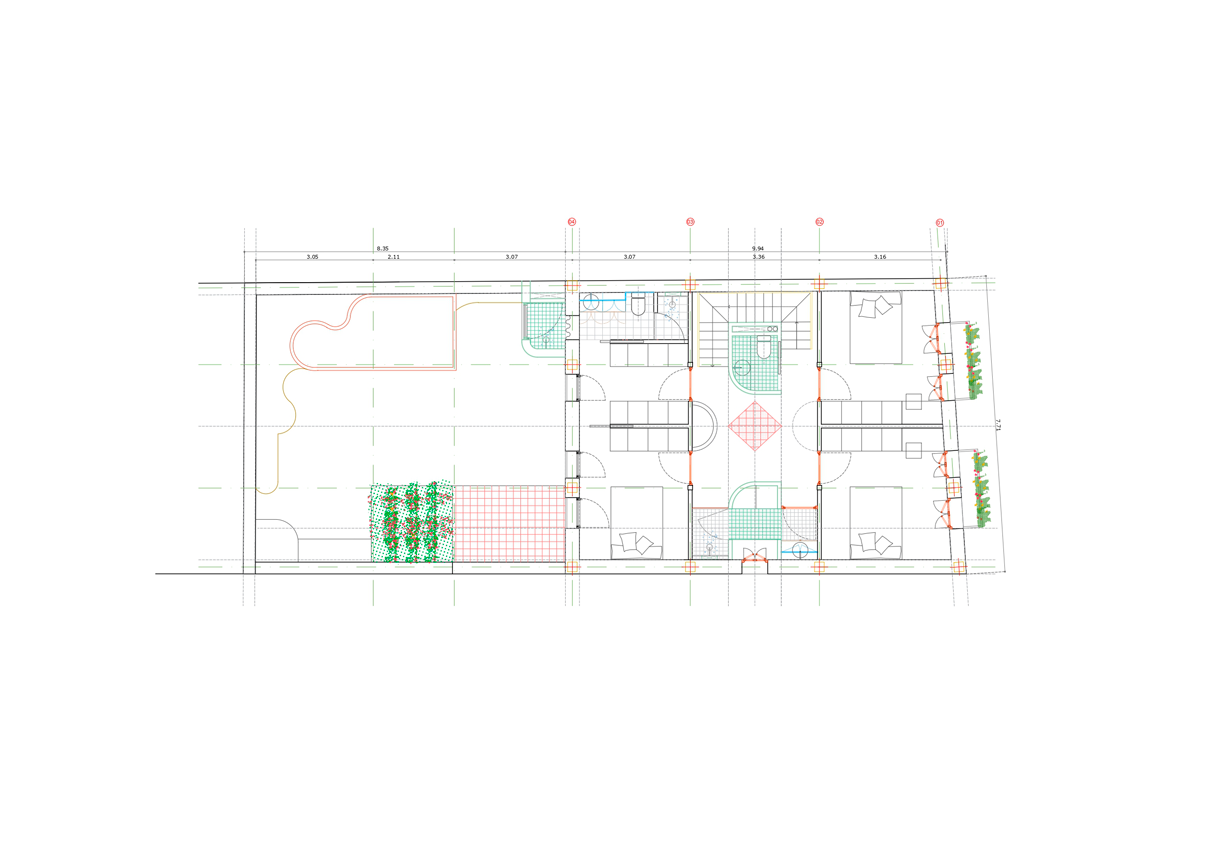

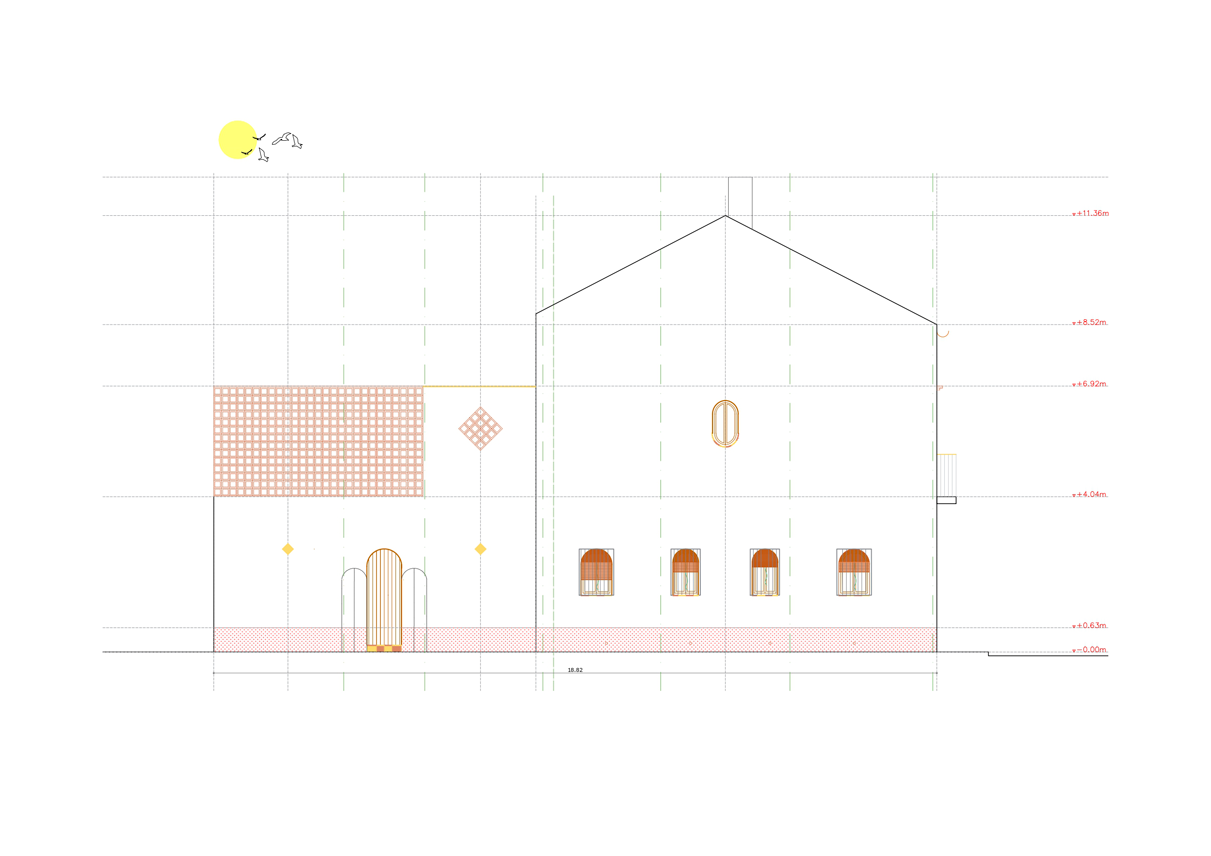
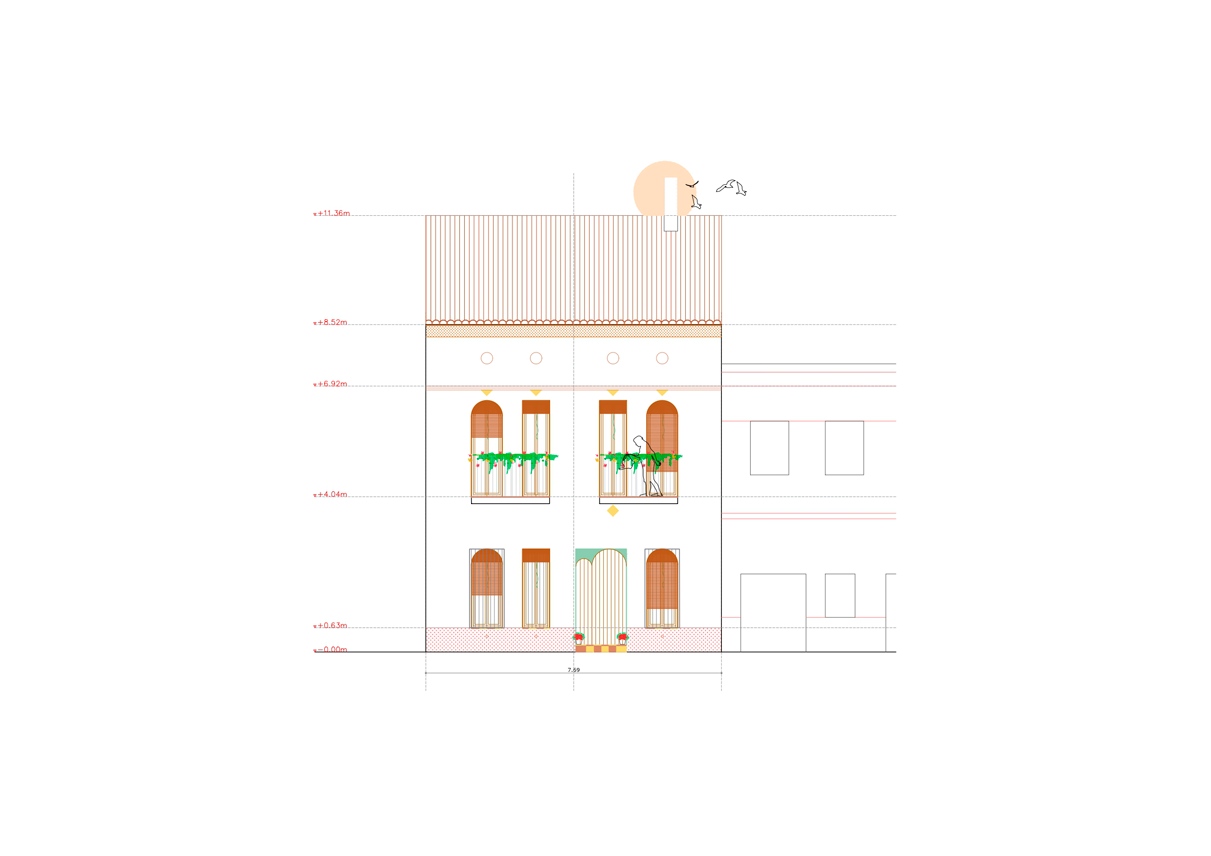
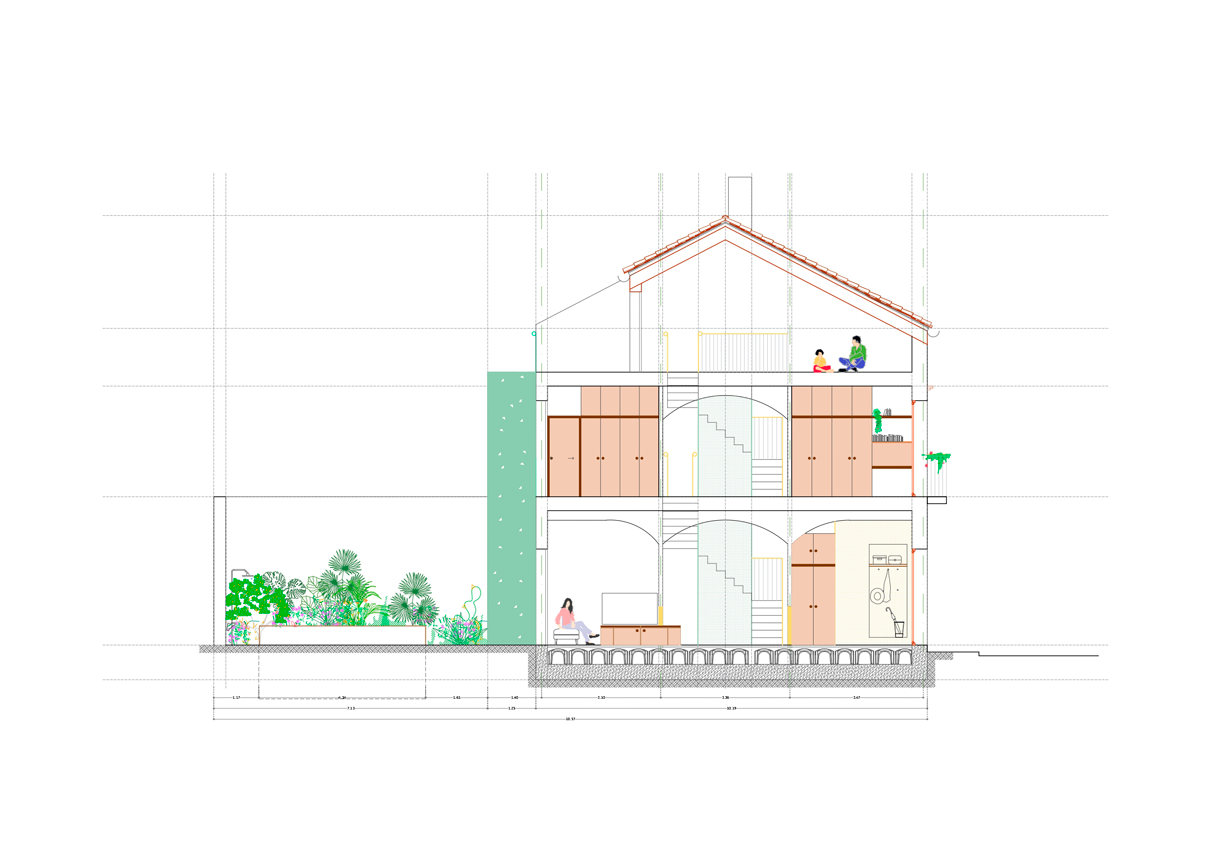
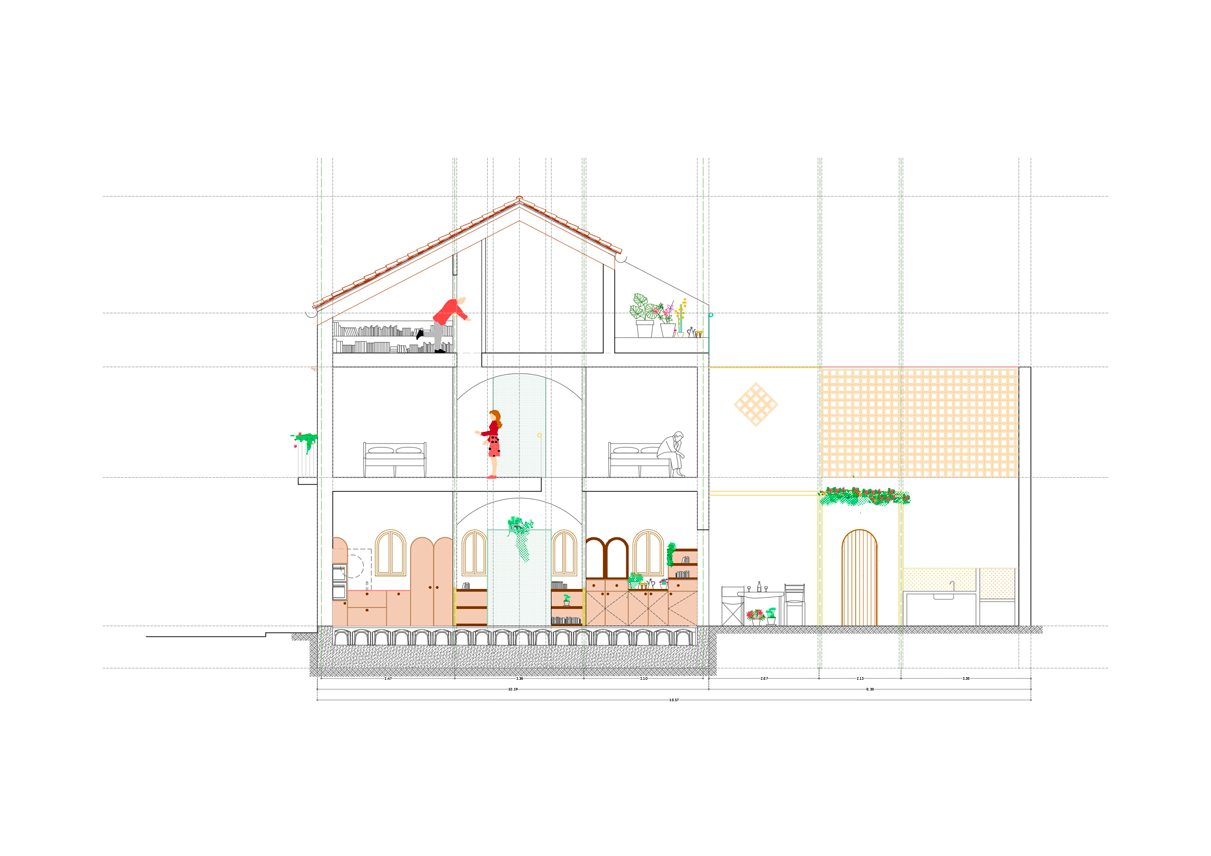
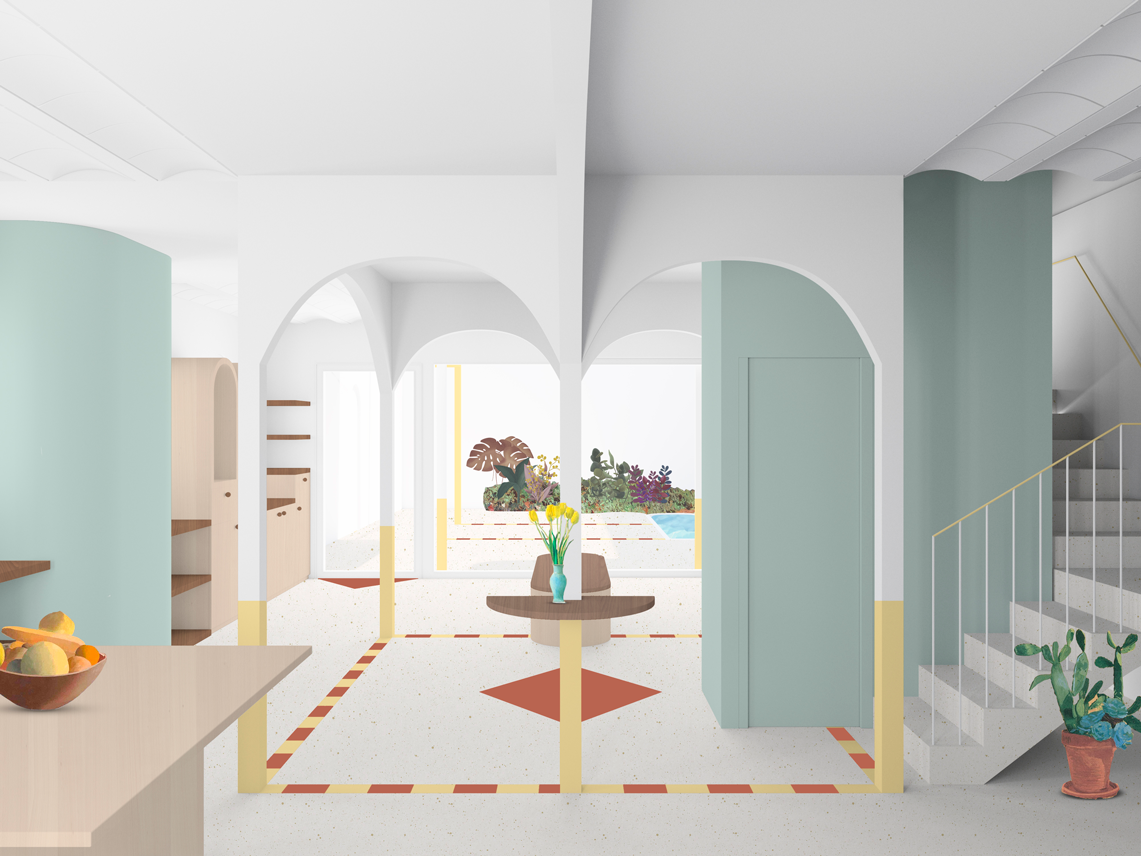
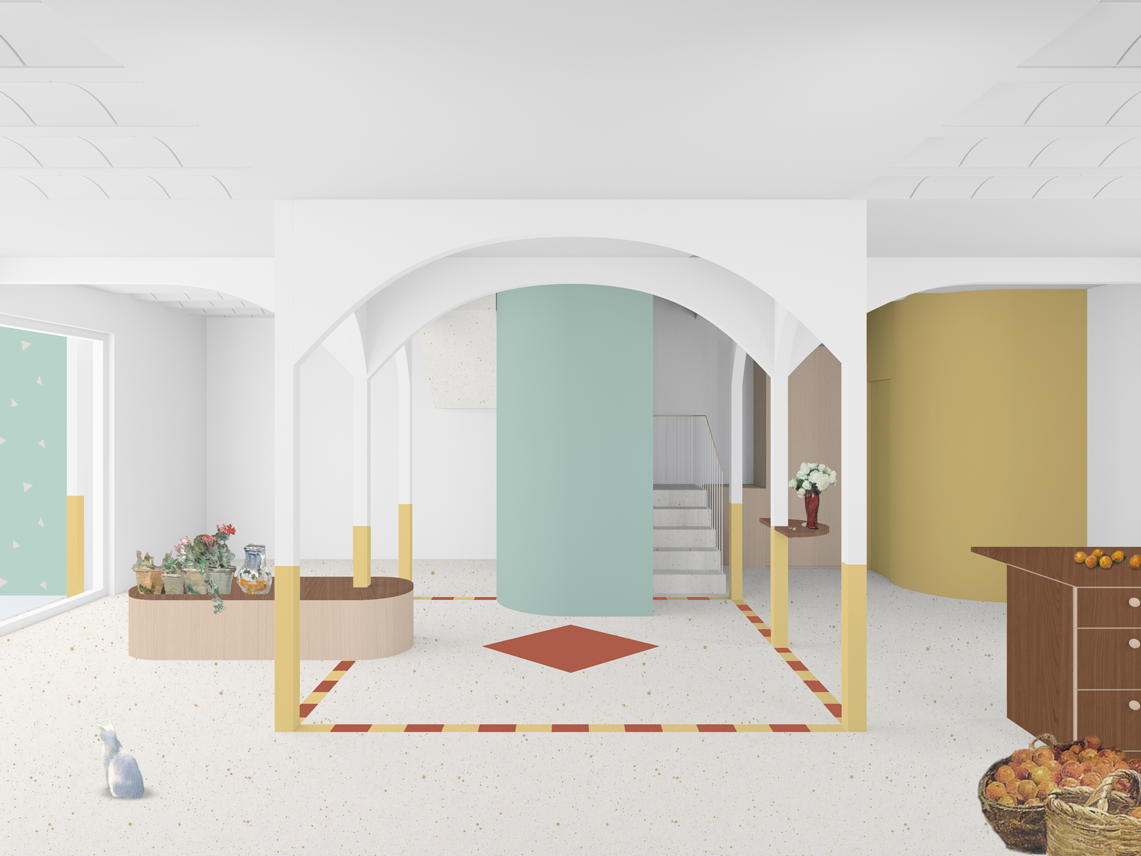
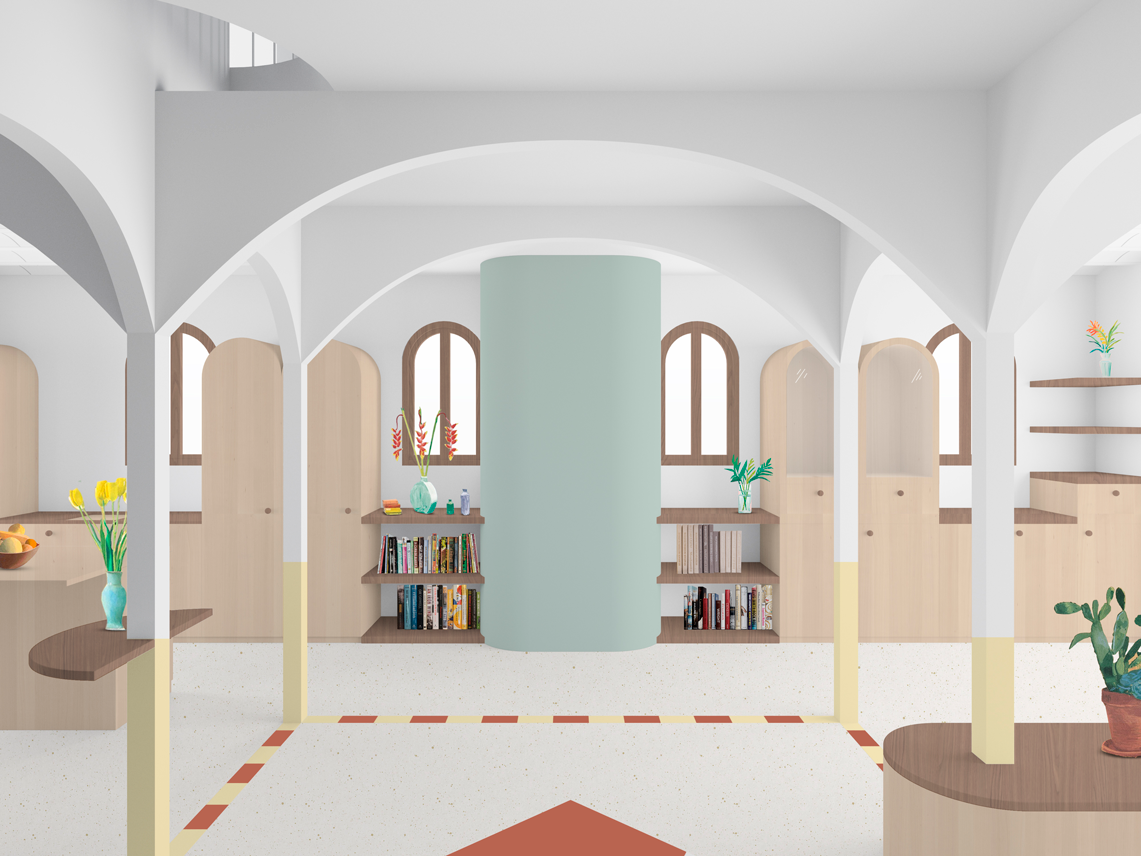
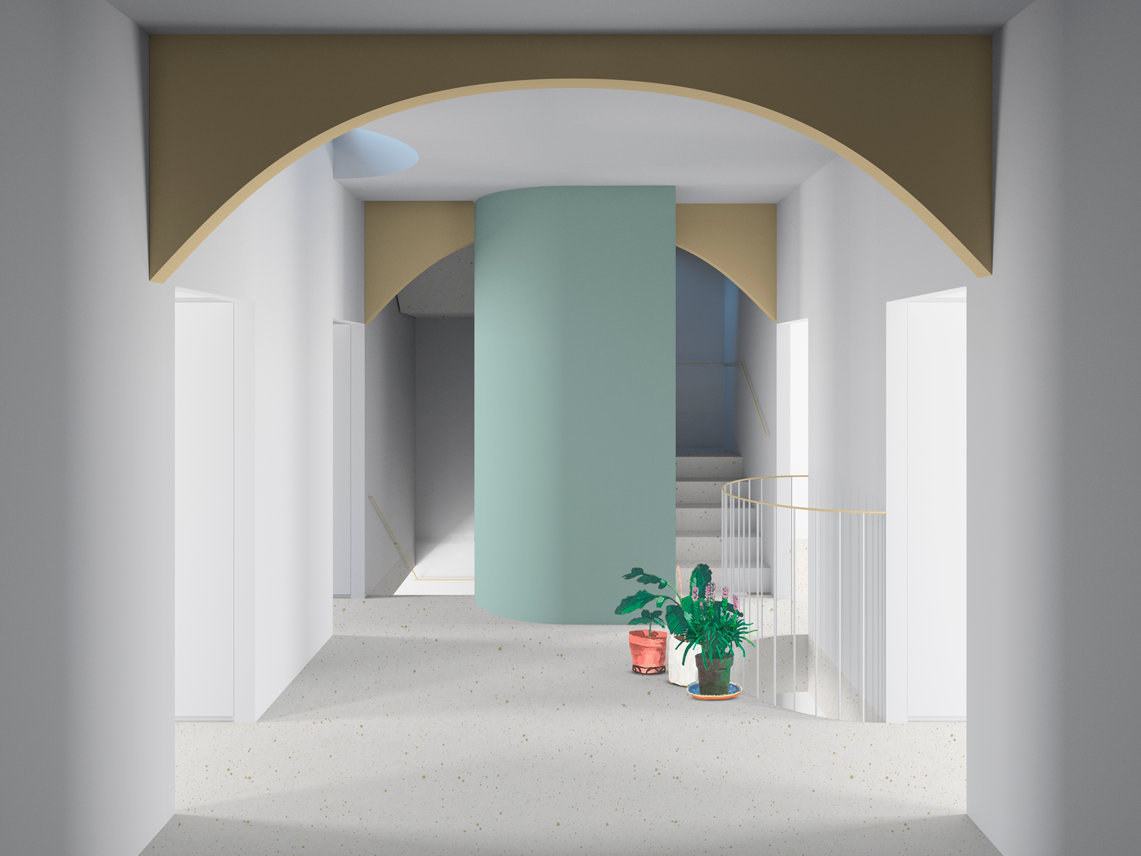
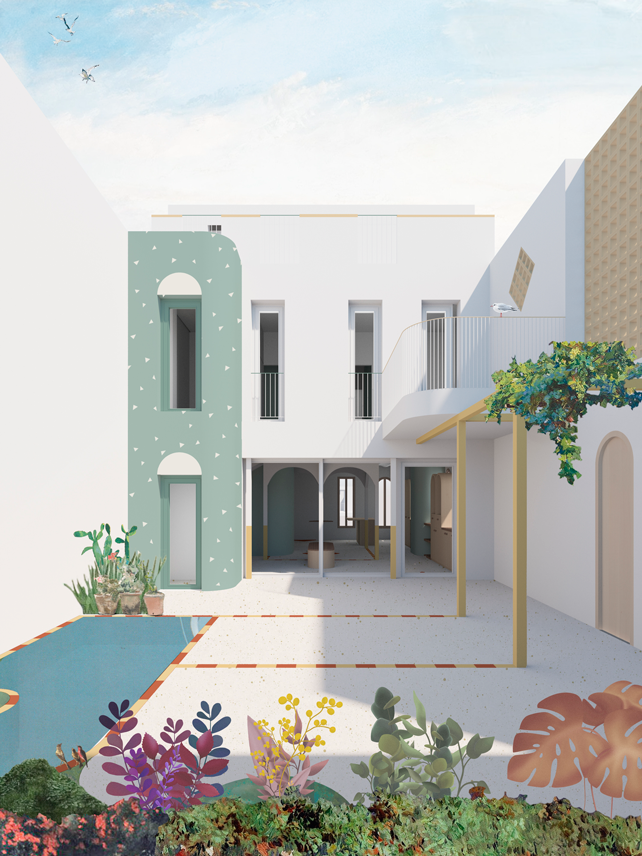

La casa dels arcs
Temcco. Structural Calculation
Diego Romero. Technical Architect
Zar Obras y Servicios. Contractor
Work in progress
The house is located on a corner where there was previously an industrial building of no architectural value. With the passage of time many of the other warehouses that crowded the block had disappeared, so that when we began the project there were few elements to which we could anchor ourselves in order to imagine the future project that would arise from demolishing the existing building. A corner position seemed privileged to us in order to re-signify the urban identity and the adjoining elevations. Being able to converse with the environment beyond the immediate one, as well as being able to do so with sensitive clients, allowed us to enrich the project and make it progress.
To respond to the new facades of the project we looked at the architecture of the neighborhood and from it we extracted certain constructive elements that after reinterpreting them would guarantee a pleasant coexistence between the historical and the contemporary: ceramics, wood, white and that certain whimsy and joy so present in the neighborhood.
The clients demanded a house designed for family life, capable of evolving at the pace of the life that would take place in it. This made us propose the project open spaces, connected to each other and sequenced as a progressive gradation from the public space (the street) to the private individual (rooms).
Distribution and structure go hand in hand throughout the project. The house is arranged in a square floor plan with three openings, three bays and three heights. This structure arranges all the spaces in a classical and logical way. The roof is resolved with wooden beams seen from the inside. Only half of the plot is built, the other half is destined to a generous courtyard where you can enjoy with the family or make meetings with friends. From the patio we can contemplate the third facade of the house. A more colorful facade, with a play of volumes and shadows that contrasts with the more modest character of the exterior facades. This produces an aesthetic transition and environments along the route from the outside of the house to the courtyard.
The first floor emerges as a large interior plaza, with elements that provide centrality and prominence as a symbol of coexistence. The kitchen, dining room and living room are located on this “square”. The centrality is reinforced by the meticulous fit of the three-flight staircase that leads to the upper floors. The bottom of the first floor is a green courtyard that illuminates with “that joy” and in which are also the pool with “that certain whimsy”, the paellero and the outdoor kitchen.
On the second floor we find again the “square” in this case making the function of the distributor that articulates around it and radially three bedrooms, two bathrooms and a dressing room.
If we continue to let ourselves be seduced by the staircase we will reach the attic. On this floor the interior area is reduced to give way to a generous terrace that overlooks the outdoor courtyard and that collects from this “joy” to the top floor to give it to two other bedrooms and a large open space.

